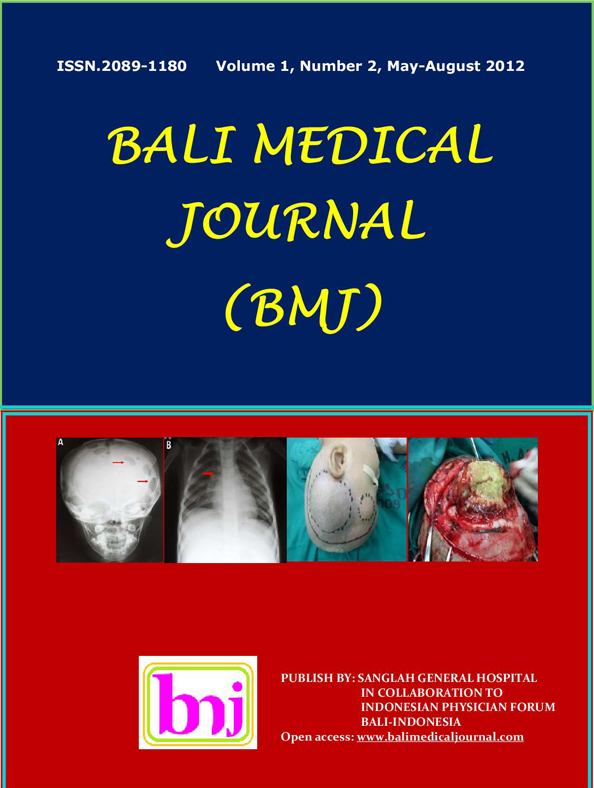Initial Clinical Findings as a Predictor of Abnormal Scan on Minor Head Injury Patients at Sanglah General Hospital, Bali-Indonesia
Abstract
Objective: Minor Head Injury (MHI) patients should not cause severe sequelae. In fact, many studies had reported that some MHI patients had abnormal scan, clinical deteoritation, and many of them have had neurosurgical intervention. This study analyzed correlations between clinical signs with abnormal scan, clinical deteoritation and surgery intervention on minor head injury patients.
Methods: A series of 364 MHI patients were prospectively enrolled in this study. In all cases clinical data were collected and a CT Scan was obtained. The relationship between clinical findings (loss of conciousness, amnesia, seizure, vomiting, headache, cepalhameatome, skull fracture, age more than 60 years),were identified as independent risk factors in corelations to abnormal scan, clinical deteoritation and surgery intervention using bivariate and logistic regresion multivariate analitycs with 95 % CI.
Results: the incidence of abnormal scan was 13.8% (48 patients), 3.3% (12 patients) with clinical deteoritation, and incidence of surgery intervention was 3.8% (14 patiens). Lost of conciousness, amnesia, cepalhematoma, skull fracture, and age more than 60 years old are independent variabels had statisiticly significant with abnormal scan. Amnesia, cepalhematome, skull fracture are independent variables which had statisitc significantly with clinical deterioritation and surgical intervention.
Conclusions: Clinical variables which had statistic significanly can be used as predictors of abnormal scan, clinical deteoritation, and surgical intervension. Avoiding systematic CT Scan indication implies a rate of misdiagnosis, but liberal scan can be increasing the cost of patients.


